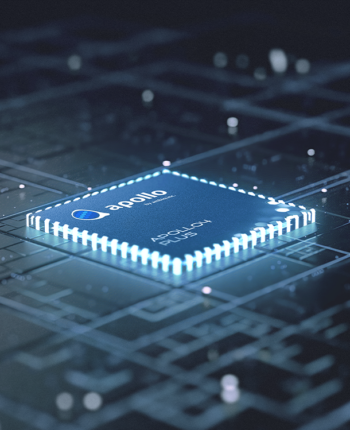What Does Al ambiq copper still Mean?

DCGAN is initialized with random weights, so a random code plugged into the network would create a very random image. Nevertheless, when you might imagine, the network has numerous parameters that we can tweak, and the purpose is to locate a setting of those parameters that makes samples created from random codes look like the instruction facts.
Weak spot: Within this example, Sora fails to model the chair being a rigid item, bringing about inaccurate physical interactions.
Information Ingestion Libraries: productive seize details from Ambiq's peripherals and interfaces, and reduce buffer copies by using neuralSPOT's aspect extraction libraries.
AI element developers deal with numerous needs: the characteristic need to suit in a memory footprint, meet latency and accuracy requirements, and use as little energy as possible.
The Apollo510 MCU is now sampling with customers, with normal availability in This fall this calendar year. It has been nominated from the 2024 embedded globe community beneath the Hardware class to the embedded awards.
Inference scripts to check the resulting model and conversion scripts that export it into something which is usually deployed on Ambiq's components platforms.
Staying Forward of the Curve: Keeping in advance is also significant in the modern day business surroundings. Enterprises use AI models to react to transforming markets, anticipate new sector needs, and acquire preventive steps. Navigating these days’s regularly changing organization landscape just bought simpler, it's like obtaining GPS.
AI models are like cooks subsequent a cookbook, constantly enhancing with each new details ingredient they digest. Doing the job at the rear of the scenes, they implement sophisticated mathematics and algorithms to system facts fast and successfully.
additional Prompt: Photorealistic closeup video clip of two pirate ships battling one another because they sail inside of a cup of espresso.
more Prompt: This near-up shot of the Victoria crowned pigeon showcases its striking blue plumage and purple chest. Its crest is fabricated from delicate, lacy feathers, when its eye is really a placing pink colour.
Additionally, by leveraging extremely-customizable configurations, SleepKit can be used to develop tailor made workflows for your presented software with small coding. Confer with the Quickstart to swiftly get up and functioning in minutes.
In addition to being able to make a online video only from textual content Guidance, the model has the capacity to just take an present still graphic and generate a video clip from it, animating the picture’s contents with precision and attention to tiny depth.
SleepKit presents a element keep that permits you to effortlessly generate and extract features QFN package from your datasets. The feature retail outlet involves a number of element sets accustomed to train the involved model zoo. Every single function established exposes several high-stage parameters that may be accustomed to customize the element extraction procedure for just a provided software.
Power monitors like Joulescope have two GPIO inputs for this purpose - neuralSPOT leverages both to help identify execution modes.
Accelerating the Development of Optimized AI Features with Ambiq’s neuralSPOT
Ambiq’s neuralSPOT® is an open-source AI developer-focused SDK designed for our latest Apollo4 Plus system-on-chip (SoC) family. neuralSPOT provides an on-ramp to the rapid development of AI features for our customers’ AI applications and products. Included with neuralSPOT are Ambiq-optimized libraries, tools, and examples to help jumpstart AI-focused applications.
UNDERSTANDING NEURALSPOT VIA THE BASIC TENSORFLOW EXAMPLE
Often, the best way to ramp up on a new software library is through a comprehensive example – this is why neuralSPOt includes basic_tf_stub, an illustrative example that leverages many of neuralSPOT’s features.
In this article, we walk through the example block-by-block, using it as a guide to building AI features using neuralSPOT.
Ambiq's Vice President of Artificial Intelligence, Carlos Morales, went on CNBC Street Signs Asia to discuss the power consumption of AI and trends in endpoint devices.
Since 2010, Ambiq has been a leader in ultra-low power semiconductors that enable endpoint devices with more data-driven and AI-capable features while dropping the energy requirements up to 10X lower. They do this with the patented Subthreshold Power Optimized Technology (SPOT ®) platform.
Computer inferencing is complex, and for endpoint AI to become practical, these devices have to drop from megawatts of power to microwatts. This is where Ambiq has the power to change industries such as healthcare, agriculture, and Industrial IoT.
Ambiq Designs Low-Power for Next Gen Endpoint Devices
Ambiq’s VP of Architecture and Product Planning, Dan Cermak, joins the ipXchange team at CES to discuss how manufacturers can improve their products with ultra-low power. As technology becomes more sophisticated, energy consumption continues to grow. Here Dan outlines how Ambiq stays ahead of the curve by planning for energy requirements 5 years in Ambiq semiconductor advance.
Ambiq’s VP of Architecture and Product Planning at Embedded World 2024
Ambiq specializes in ultra-low-power SoC's designed to make intelligent battery-powered endpoint solutions a reality. These days, just about every endpoint device incorporates AI features, including anomaly detection, speech-driven user interfaces, audio event detection and classification, and health monitoring.
Ambiq's ultra low power, high-performance platforms are ideal for implementing this class of AI features, and we at Ambiq are dedicated to making implementation as easy as possible by offering open-source developer-centric toolkits, software libraries, and reference models to accelerate AI feature development.

NEURALSPOT - BECAUSE AI IS HARD ENOUGH
neuralSPOT is an AI developer-focused SDK in the true sense of the word: it includes everything you need to get your AI model onto Ambiq’s platform. You’ll find libraries for talking to sensors, managing SoC peripherals, and controlling power and memory configurations, along with tools for easily debugging your model from your laptop or PC, and examples that tie it all together.
Facebook | Linkedin | Twitter | YouTube